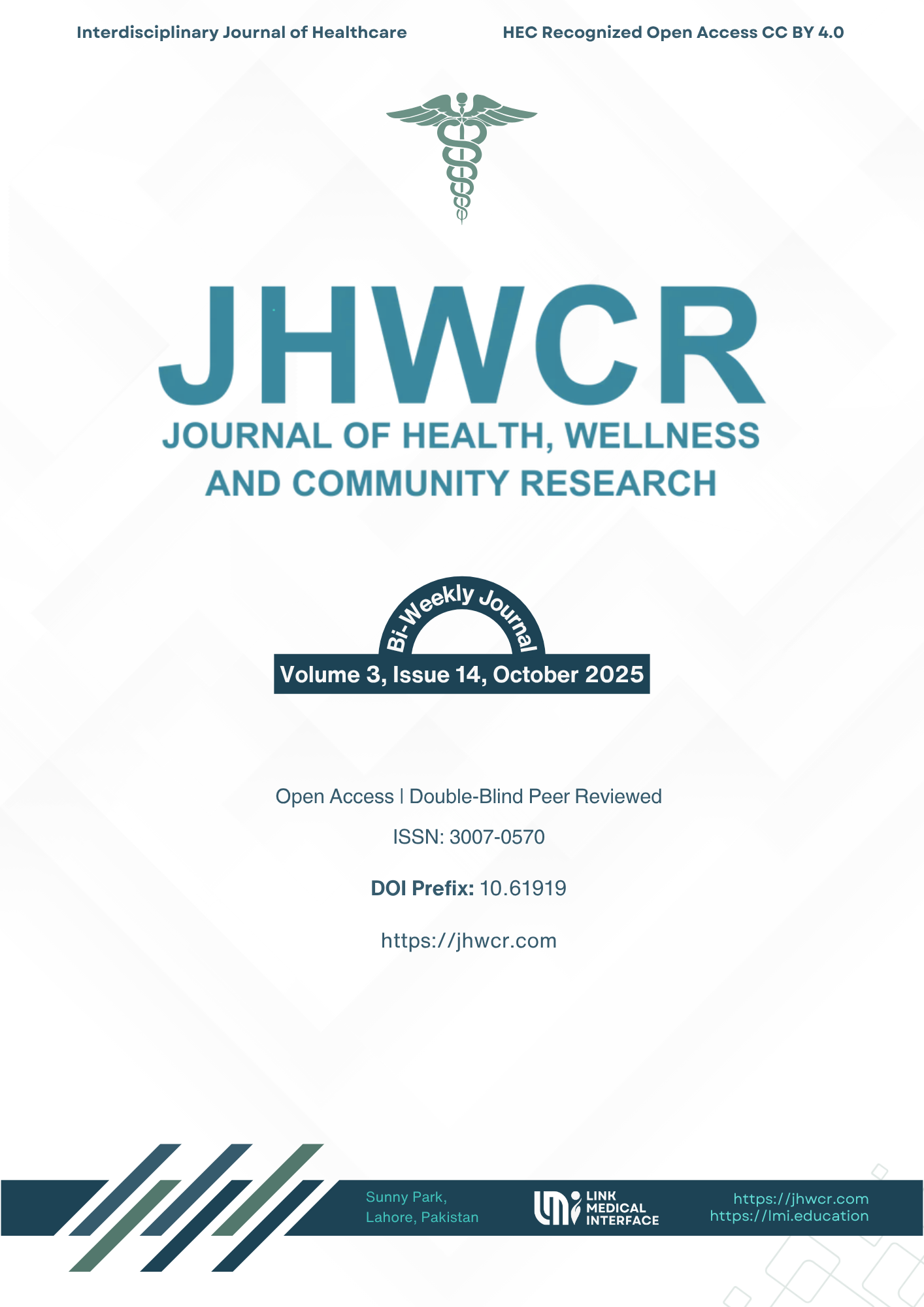Effect of Spinal Mobilization with Leg Movement Versus Sustained Natural Apophyseal Glides in Lumbar Disc Herniation with Unilateral Radiculopathy
DOI:
https://doi.org/10.61919/n18b6r51Keywords:
Lumbar Disc Herniation, Unilateral Radiculopathy, SNAGs, Spinal Mobilization With Leg Movement, Manual Therapy, PhysiotherapyAbstract
Background: Lumbar disc herniation with unilateral radiculopathy is a leading cause of chronic low back pain, functional disability, and neural tension. Manual therapy techniques such as Sustained Natural Apophyseal Glides (SNAGs) and Spinal Mobilization With Leg Movement (SMWLM) are widely used in physiotherapy, yet comparative evidence regarding their differential effects on pain, function, and neural mobility remains limited. Objective: To compare the effects of SNAGs and SMWLM on pain intensity, functional disability, and neural mobility in individuals with lumbar disc herniation presenting with unilateral radiculopathy. Methods: A quasi-experimental study was conducted among 30 participants aged 20–50 years diagnosed with lumbar disc herniation and unilateral radiculopathy. Participants were equally divided into two groups: Group A received SMWLM and Group B received SNAGs, both supplemented with baseline heat therapy for two weeks. Pain intensity, functional disability, and neural mobility were assessed using the Numeric Pain Rating Scale (NPRS), Modified Oswestry Disability Index (MODI), and Straight Leg Raise (SLR) test, respectively. Data were analyzed using paired and independent sample t-tests with a significance level of p<0.05. Results: Both groups showed significant within-group improvements (p<0.001) across all outcomes. Between-group analysis revealed that SNAGs produced greater reductions in pain (ΔNPRS = 1.87 vs 1.07) and disability (ΔMODI = 2.00 vs 1.33), whereas SMWLM achieved greater improvement in SLR range of motion (ΔSLR = 23.93° vs 19.27°). All between-group differences were statistically significant (p<0.001). Conclusion: Both SNAGs and SMWLM effectively reduce pain and disability and enhance neural mobility in patients with lumbar disc herniation and unilateral radiculopathy. SNAGs demonstrated superior analgesic and functional benefits, while SMWLM provided greater gains in neural mobility. Individualized use or combination of these techniques may optimize rehabilitation outcomes.
Downloads
Published
Issue
Section
License
Copyright (c) 2025 Awais Bin Inam, Haziq Bin Liaqat, Tasadduq Hussain, M. Saqib Adil, Mishal Zahra, Bushra Abdullah, Muhammad Yasir, Farah Ishaq (Author)

This work is licensed under a Creative Commons Attribution 4.0 International License.


